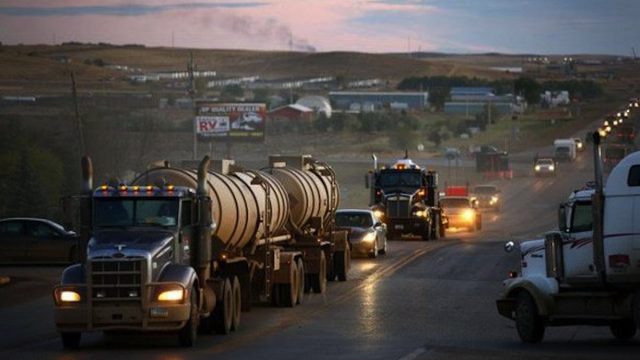Is The Bakken Housing Boom A Bubble, Or A Good Long-Term Investment?

For a while now I’ve been wondering if we have a housing bubble in North Dakota. I definitely think we’ve got a bubble of hotel rooms. In Minot, and points further west into the Bakken boom area, there are hundreds of new hotel rooms, but occupancy rates are beginning to fall and where just a few years ago you couldn’t book a hotel room there is now a glut of vacancies with discount prices being advertised.
But does that problem extend to permanent housing as well? I think it might. Mike Anderson, Executive Director of the North Dakota Housing Finance Agency said I was wrong in a guest post here on SAB. Regardless of who is right, one thing is certain: Capital isn’t exactly flowing freely into developing Bakken communities as this article from Reuters notes:
Many would-be financiers say the North Dakota oil patch real estate market is too hot to handle right now, with demand for housing outstripping supply, fueling high prices. The average two-bedroom apartment in the oil patch rents for more than $2,500 per month, helping drive land prices sky-high and sparking concern about a bubble.
National homebuilders such as Pulte Group, D.R. Horton and Hovnanian Enterprises have yet to enter North Dakota. Pulte said it was focused on improving its market share on the East and West Coasts, as well as some Midwest states. The other two declined to comment.
Part of the hesitancy stems from the reluctance of energy-field workers to move their families full-time to North Dakota, a step that would cause them to spend more money locally. The state’s biting winter weather and remoteness have discouraged all but a few families, realtors say.
Here’s a shocking statistic showing just how temporary the housing boom in western North Dakota may be:
Data about home-building permits suggests workers are still keen to rent apartments rather than invest in housing and settle down. Only 20 permits were granted in Williston [for single-family homes] during the first five months of this year, compared to permits to build 482 apartment units, according to the city’s building department. As recently as 2010 the number of homebuilding permits in Williston, a city of about 16,000, far outpaced apartment permits.
We can look to the 2012 election for more evidence to back this up. In the oh-so-tight US Senate race between Republican Rick Berg and Democrat Heidi Heitkamp, the NDGOP was looking for a big turnout of conservative voters in the oil patch to offset Heitkamp’s gains in the eastern part of the state. But it didn’t materialize. According to an analysis I did after the election. Voting in oil counties was about 48% of the increase in overall voting, but it was just a 1% increase in total ballots cast statewide. There were just 2884 more votes from oil-producing counties in 2012 as compared to 2008, a number offset by the 1,441 vote increase in counties President Obama won in 2008.
That adds up to a lot of people who are now working and living in North Dakota who don’t see themselves as actual residents of the state. At least not enough to vote in an election.
Which explains the hesitancy of lenders to jump into the North Dakota housing boom. They’re not convinced yet that there’s going to be enough long-term demand for housing here to justify long-term investment in housing development.
And they’re probably right to be hesitant, even given bullish prognostications for energy reserves here.




